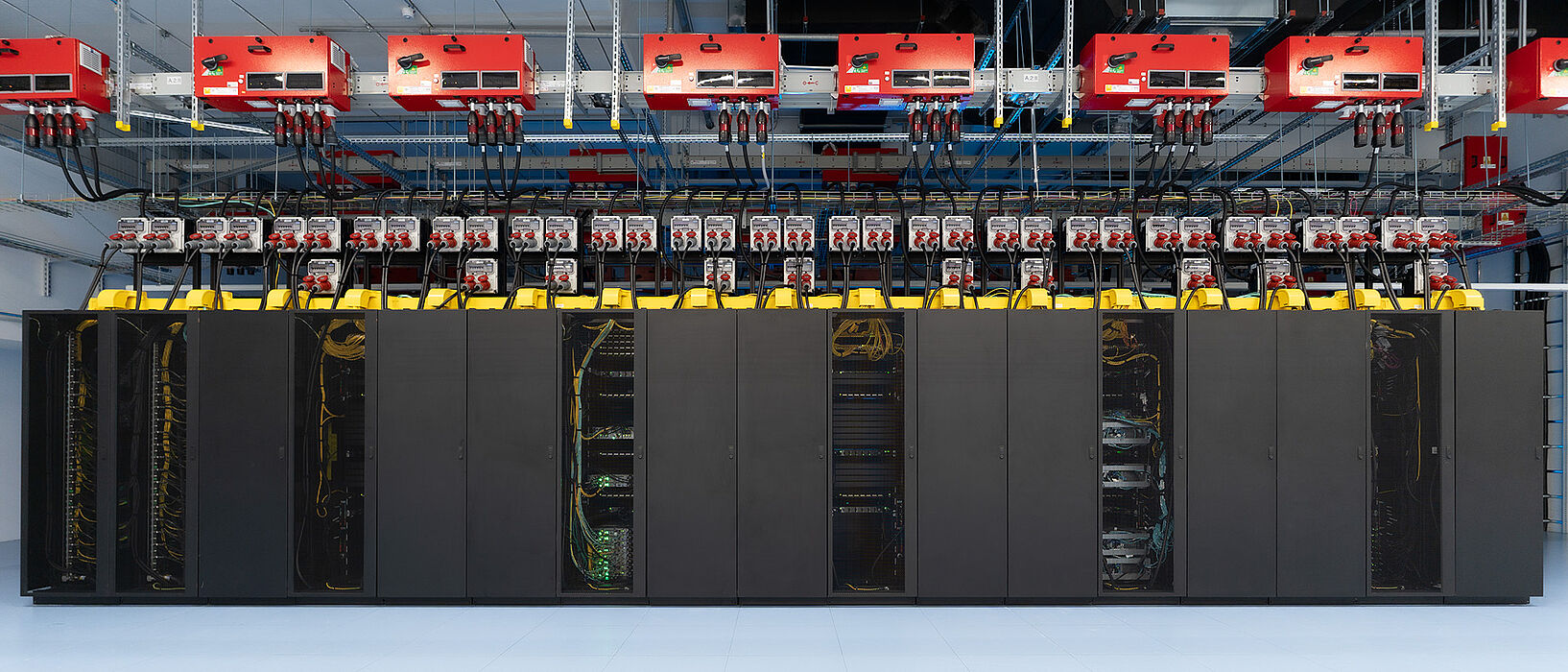5th place on international Green500 list
142,656 processor cores, 108 GPUs, AMD processors of the current Turin generation and an IBM Spectrum Scale file system with five petabytes of storage capacity: these are the outstanding inner values of Otus, the new supercomputer at Paderborn University. Even before its official launch in the third quarter of this year, it is already breaking records: at the ISC in Hamburg, the international trade fair for high-performance computing (HPC), artificial intelligence, data analytics and quantum computing, the system is ranked fifth in the Green500, the list of the world's most efficient computer systems. The Green500 and Top500 rankings are regarded as the benchmark in scientific and IT circles.
Setting standards in terms of sustainability
Otus, developed by Lenovo in collaboration with pro-com Datensyteme GmbH, expands the current infrastructure of the HPC computing centre and enables a variety of computationally intensive applications - from atomistic simulations to quantum computing. The computer system operated by the Paderborn Centre for Parallel Computing (PC2), an interdisciplinary research facility at the university, has more than twice the computing power of the previous Noctua 2 system. ‘With Otus, we are developing an innovative and forward-looking infrastructure that enables scientists to work on complex research questions in disciplines such as physics, chemistry and machine learning at the highest level. At the same time, we are setting standards in terms of energy efficiency and sustainability. Initial tests have already confirmed the high performance,’ says Prof Dr Christian Plessl, computer scientist at the Paderborn Institute of Computer Science and head of the PC2. Thanks to indirect free cooling, for example, the supercomputer can be operated in an energy-efficient manner all year round and the waste heat with its high temperatures can be used to heat the building. The electricity is generated 100% from renewable sources and is therefore CO2-free.
Top 10 academic data centres in Germany
The system can be expanded to include up to 100 FPGA (Field Programmable Gate Arrays) cards. The innovative hardware components provide an ideal experimental environment for computer systems research. ‘This will continue to provide the best conditions for outstanding science in the future,’ says Prof Dr Matthias Bauer, President of Paderborn University, adding: ’High-performance computing is used today for various disciplines such as quantum, climate and materials research. Here in Paderborn, we not only have a long tradition and relevant expertise in the field of computational science, but also offer world-class, state-of-the-art infrastructure.’
This benefits not only the scientists at the local university. A large part of the infrastructure is also made available to researchers from all over Germany as part of the National Supercomputing Centre (NHR). To put this into perspective: many research institutions have local computing centres for their own use. In addition, there are the national high-performance computing centres in the NHR network, to which PC2 also belongs. They make their supercomputers available to users from universities throughout Germany. With Noctua 2, the university was already one of the top 10 academic computing centres in Germany and therefore at the forefront of university high-performance computing.
The procurement was carried out as part of the NHR network and is subsidised in equal parts by the state of North Rhine-Westphalia and the federal government. The costs are around 14 million euros. Otus will undergo the final acceptance tests in the coming weeks and will then be available for use. ‘The fact that we can now celebrate such a brilliant start for Otus with this placement is also special for us,’ says a delighted Prof Plessl.
Further information is available at https://pc2.uni-paderborn.de/de/systems-and-services/otus and at https://www.uni-paderborn.de/thema/high-performance-computing.

